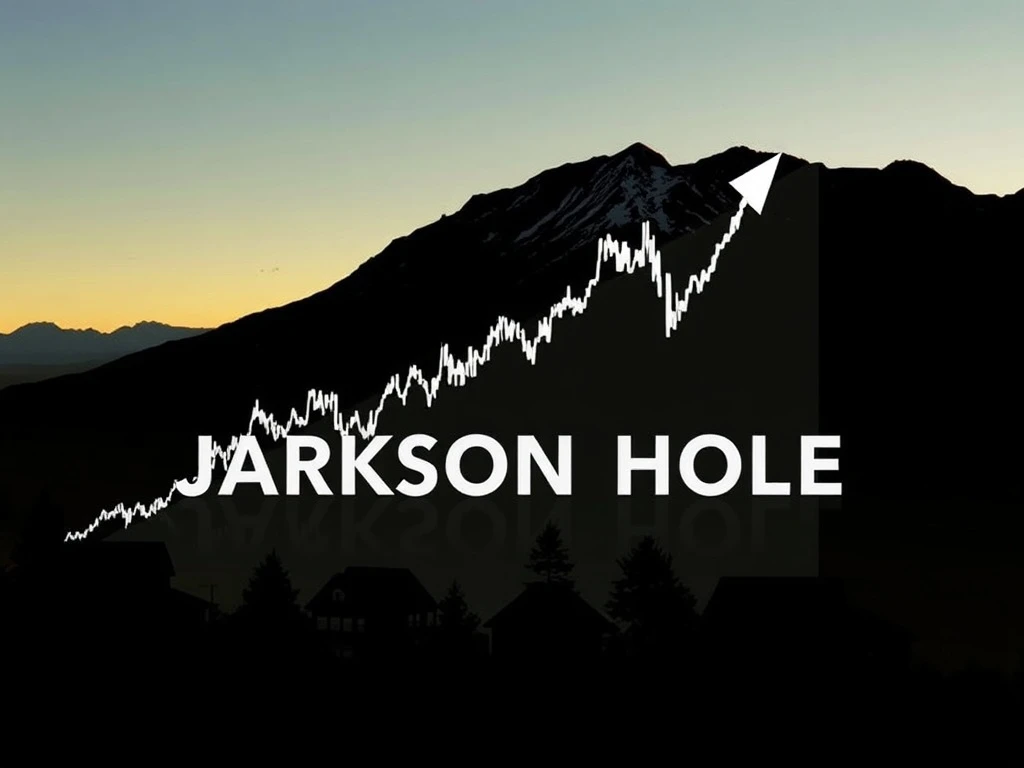Investors are demonstrating remarkable confidence in the housing sector. They are actively plowing capital into **homebuilder stocks**. This significant trend suggests a strong belief in the resilience and future growth of the housing market. However, a critical question looms: Will the upcoming Jackson Hole economic symposium challenge this bullish sentiment? This annual event often sets the tone for monetary policy. Therefore, its outcomes could significantly influence market dynamics for **homebuilder stocks** and the broader economy.
The Unprecedented Influx into Homebuilder Stocks
Recent market data reveals a substantial surge in investments directed towards **homebuilder stocks**. Many factors contribute to this concentrated buying interest. Primarily, the housing market faces a severe supply shortage. This persistent lack of available homes fuels demand and pushes prices upward. Consequently, homebuilders find themselves in a favorable position. They can command higher prices for new constructions. This directly translates into improved revenue and profit margins.
Furthermore, demographic shifts play a crucial role. A large cohort of millennials is now entering prime home-buying age. They seek affordable housing options. This demographic pressure sustains demand even amidst fluctuating interest rates. Moreover, remote work trends continue to influence housing preferences. Many individuals now desire larger homes or homes in suburban and exurban areas. This further boosts the demand for new builds. Consequently, homebuilders are actively expanding their operations to meet this sustained interest.
Investor sentiment also benefits from expectations of stabilizing interest rates. After a period of rapid increases, the Federal Reserve might adopt a more measured approach. This prospect encourages buyers. Lower mortgage rates can make homeownership more accessible. Therefore, potential homebuyers are returning to the market. This renewed interest directly benefits **homebuilder stocks**. Ultimately, the current environment appears highly favorable for companies involved in residential construction.
Understanding the Jackson Hole Symposium’s Influence
The Jackson Hole Economic Symposium is an annual gathering. It brings together central bankers, finance ministers, academics, and financial market participants from around the world. The Federal Reserve Bank of Kansas City hosts this prestigious event in Jackson Hole, Wyoming. It serves as a crucial platform for discussing long-term policy issues. Often, Federal Reserve chairs use this forum to signal potential shifts in monetary policy. Therefore, market participants pay close attention to the speeches delivered here.
Historically, speeches at Jackson Hole have provided significant clues. They often hint at future interest rate decisions or quantitative easing policies. For instance, in past years, remarks from the Fed Chair have moved markets substantially. A hawkish stance, suggesting higher interest rates, typically dampens investor enthusiasm. Conversely, a dovish tone, indicating lower rates or a pause, generally supports asset prices. The symposium’s influence extends beyond just interest rates. It can also shape expectations for inflation and economic growth. This broader impact affects various sectors, including real estate and, by extension, **homebuilder stocks**.
This year, particular focus rests on inflation trends and labor market data. Central bankers will likely discuss the path forward for taming inflation. Their commentary on economic resilience will also be key. Any hints of continued aggressive tightening could alter market expectations. Conversely, signals of a more cautious approach might reinforce current bullish trends. Therefore, the symposium represents a pivotal moment for investors in various sectors, especially those tied to interest rate sensitivity.
Potential Headwinds: Will Jackson Hole Prove Investors Wrong?
The prevailing optimism surrounding **homebuilder stocks** could face a significant test at Jackson Hole. A primary concern for investors is the potential for the Federal Reserve to signal further interest rate hikes. Higher interest rates directly impact housing affordability. As mortgage rates climb, monthly payments become more expensive. This can cool buyer demand. Consequently, fewer people might qualify for loans. This scenario would slow new home sales.
Consider the following potential impacts of a hawkish Jackson Hole outcome:
- Increased Mortgage Rates: A clear signal for higher rates would immediately push mortgage rates up. This directly reduces purchasing power for prospective homebuyers.
- Reduced Housing Demand: As affordability decreases, the pool of eligible buyers shrinks. This could lead to a slowdown in new home orders for builders.
- Inventory Buildup: If sales slow, homebuilders might face an increase in unsold inventory. This could necessitate price reductions or incentives, impacting profit margins.
- Investor Reassessment: A shift in monetary policy outlook could cause investors to reconsider their positions in interest-rate sensitive sectors, including **homebuilder stocks**. They might shift capital to less rate-sensitive assets.
Furthermore, any commentary suggesting a prolonged period of restrictive monetary policy could weigh heavily. Homebuilders rely on consistent demand and accessible financing. A sustained high-rate environment poses a substantial challenge to their business model. Therefore, the rhetoric from central bankers at Jackson Hole carries immense weight for this sector.
Historical Precedents and Market Resilience
Examining past cycles provides valuable context for the current situation. The housing market has historically shown resilience, even during periods of rising interest rates. However, the pace and magnitude of rate increases are critical. Gradual increases often allow the market to adjust. Sharp, rapid hikes tend to create more disruption. For example, the housing market experienced slowdowns in the early 1980s and again in the mid-2000s, both influenced by monetary policy decisions.
Nevertheless, the current market differs in key aspects. The severe housing supply shortage is a defining characteristic. This underlying imbalance provides a buffer against some rate-related pressures. Even if demand softens slightly, the sheer lack of available homes supports prices. Furthermore, homebuilders have become more agile. Many now manage inventory more tightly. They also adapt their construction pipelines based on real-time market signals. This reduces the risk of oversupply.
Investors in **homebuilder stocks** are betting on this inherent resilience. They believe that strong underlying demand will absorb any temporary shocks. They also anticipate that the Federal Reserve will ultimately prioritize economic stability. This could mean a pause or even a pivot in policy if economic indicators weaken significantly. Therefore, while Jackson Hole presents a risk, the market’s fundamental dynamics offer some degree of protection for current valuations.
Navigating the Investment Landscape for Homebuilder Stocks
For investors, the period leading up to and immediately following Jackson Hole requires careful consideration. Analyzing the statements from key policymakers is paramount. Look for specific language regarding inflation targets, labor market strength, and the future path of interest rates. Any deviation from expected dovishness could trigger market volatility. Conversely, a confirmation of a ‘wait and see’ approach from the Fed could further fuel the rally in **homebuilder stocks**.
Key metrics to monitor include:
- Mortgage Application Data: This provides a real-time gauge of buyer interest.
- New Home Sales Reports: Directly indicates the pace of sales for builders.
- Builder Confidence Indices: Surveys of homebuilders offer insights into their outlook and sentiment.
- Housing Inventory Levels: Continued low inventory supports prices and builder profitability.
Ultimately, investing in **homebuilder stocks** involves balancing opportunity with risk. The current environment offers compelling reasons for optimism. However, macroeconomic events like Jackson Hole can quickly alter the landscape. Therefore, investors should remain vigilant. Diversification and a long-term perspective often prove beneficial in such dynamic markets. Understanding the interplay between monetary policy and housing fundamentals is crucial for informed decisions.
The Outlook for Homebuilder Stocks Post-Jackson Hole
The market’s reaction to the Jackson Hole symposium will significantly shape the near-term trajectory of **homebuilder stocks**. Should central bankers deliver a surprisingly hawkish message, indicating a stronger commitment to higher rates for longer, these stocks could face downward pressure. Such a scenario would likely trigger a re-evaluation of housing market forecasts. Mortgage rates would probably climb, making homeownership less accessible for many potential buyers. This could slow new home sales, impacting builders’ revenue and profitability.
Conversely, if the Federal Reserve signals a more neutral or even dovish stance, perhaps acknowledging progress on inflation or concerns about economic growth, the current rally in **homebuilder stocks** could gain further momentum. This outcome would likely lead to more stable or even declining mortgage rates, boosting buyer confidence and demand. Builders would then continue to benefit from the existing supply shortage. Therefore, the tone set at Jackson Hole is a pivotal determinant for this sector’s immediate future.
Regardless of the immediate reaction, the long-term outlook for **homebuilder stocks** remains tied to fundamental factors. These include population growth, household formation rates, and the ongoing need for housing. While monetary policy creates short-term fluctuations, the underlying demand for homes persists. Consequently, astute investors will look beyond the immediate headlines. They will focus on the resilience of individual companies and their ability to adapt to changing market conditions. The symposium is a key event, but it is one piece of a larger economic puzzle.
Please enable JS and disable any ad blocker
Frequently Asked Questions (FAQs) About Homebuilder Stocks and Jackson Hole
Q1: Why are investors currently interested in homebuilder stocks?
Investors are drawn to homebuilder stocks due to a severe housing supply shortage, sustained buyer demand from demographic shifts, and expectations of stabilizing interest rates. These factors collectively create a favorable environment for new home construction and sales, boosting builder profitability.
Q2: What is the Jackson Hole Economic Symposium?
The Jackson Hole Economic Symposium is an annual conference hosted by the Federal Reserve Bank of Kansas City. It gathers central bankers, economists, and financial experts to discuss long-term economic issues. Speeches at this event often signal potential shifts in monetary policy, particularly regarding interest rates.
Q3: How could Jackson Hole impact homebuilder stocks?
If the Federal Reserve signals a hawkish stance at Jackson Hole, implying further interest rate hikes, it could lead to higher mortgage rates. This would reduce housing affordability and potentially slow new home sales, negatively impacting homebuilder stocks. Conversely, a dovish stance could support these stocks.
Q4: What are the main risks for homebuilder stocks right now?
The primary risks include continued interest rate hikes, which can reduce housing affordability and demand, and potential economic slowdowns. While demand is strong, a significant shift in monetary policy or a recession could challenge the sector’s current momentum.
Q5: What should investors monitor after Jackson Hole regarding homebuilder stocks?
Investors should closely monitor mortgage application data, new home sales reports, builder confidence indices, and housing inventory levels. These metrics provide crucial insights into buyer demand and the overall health of the housing market, directly influencing the performance of homebuilder stocks.
Q6: Has the housing market been resilient to rate hikes historically?
Historically, the housing market has shown resilience, but the impact of rate hikes depends on their speed and magnitude. While sharp increases can cause slowdowns, the current severe supply shortage provides a buffer, suggesting some resilience even in a higher-rate environment.














